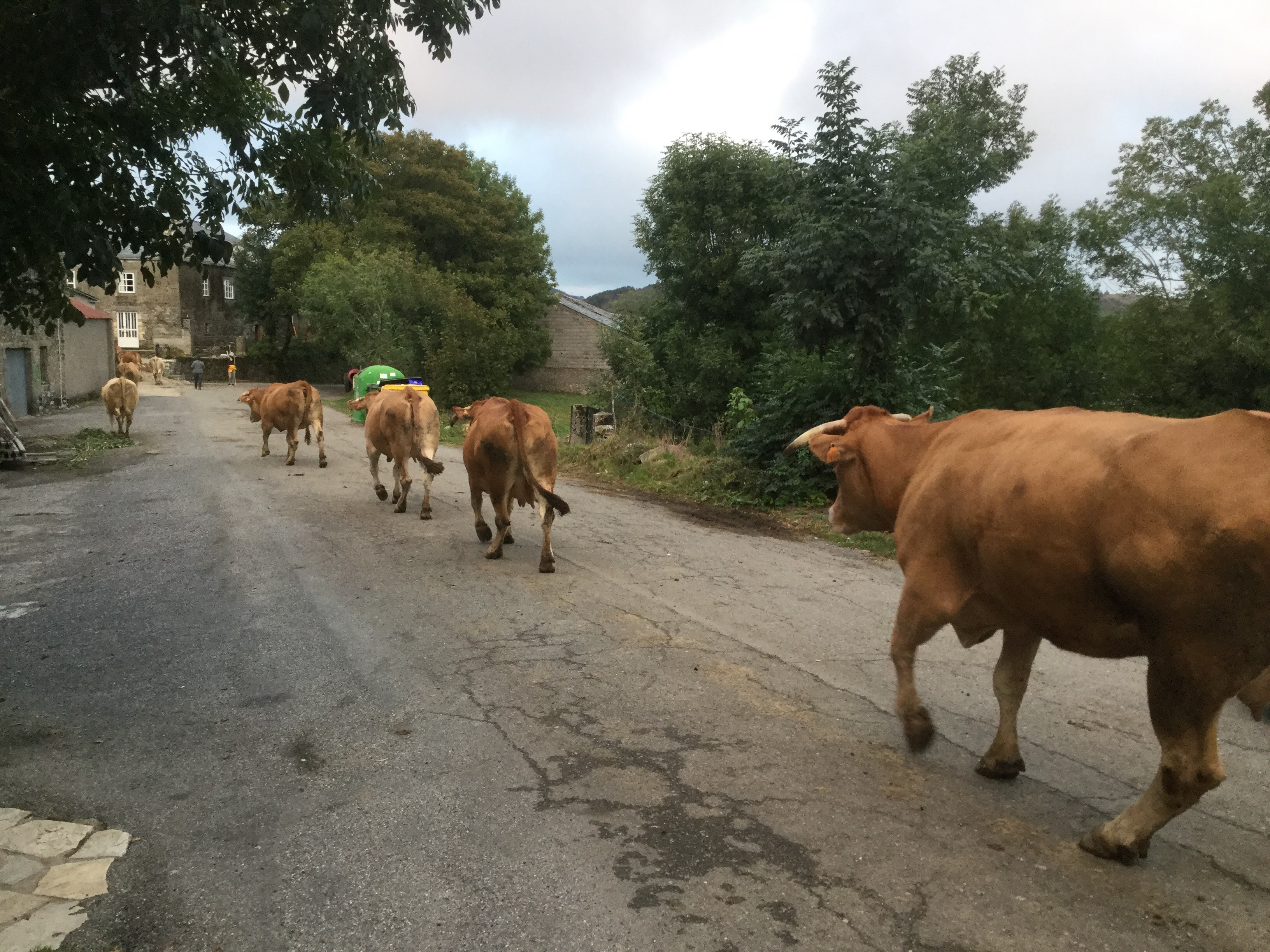We left Trabadelo on the mountain road that was the towns main road. The road continued through several small towns.
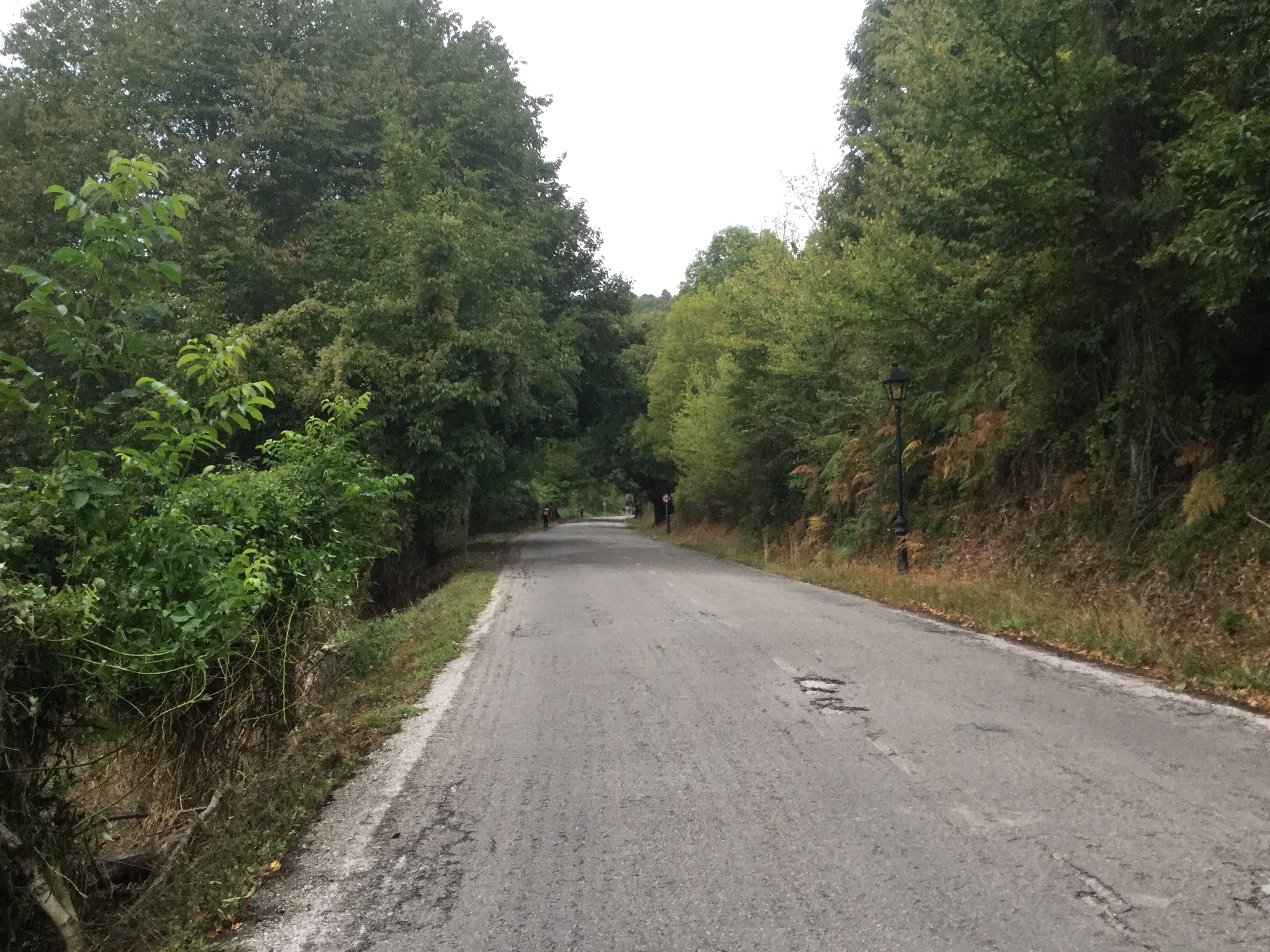
One of the small towns, Ambasmestas, is where the Rio Balboa flows into the Rio Valcarce that we had been following and criss crossing for a large part of the day.
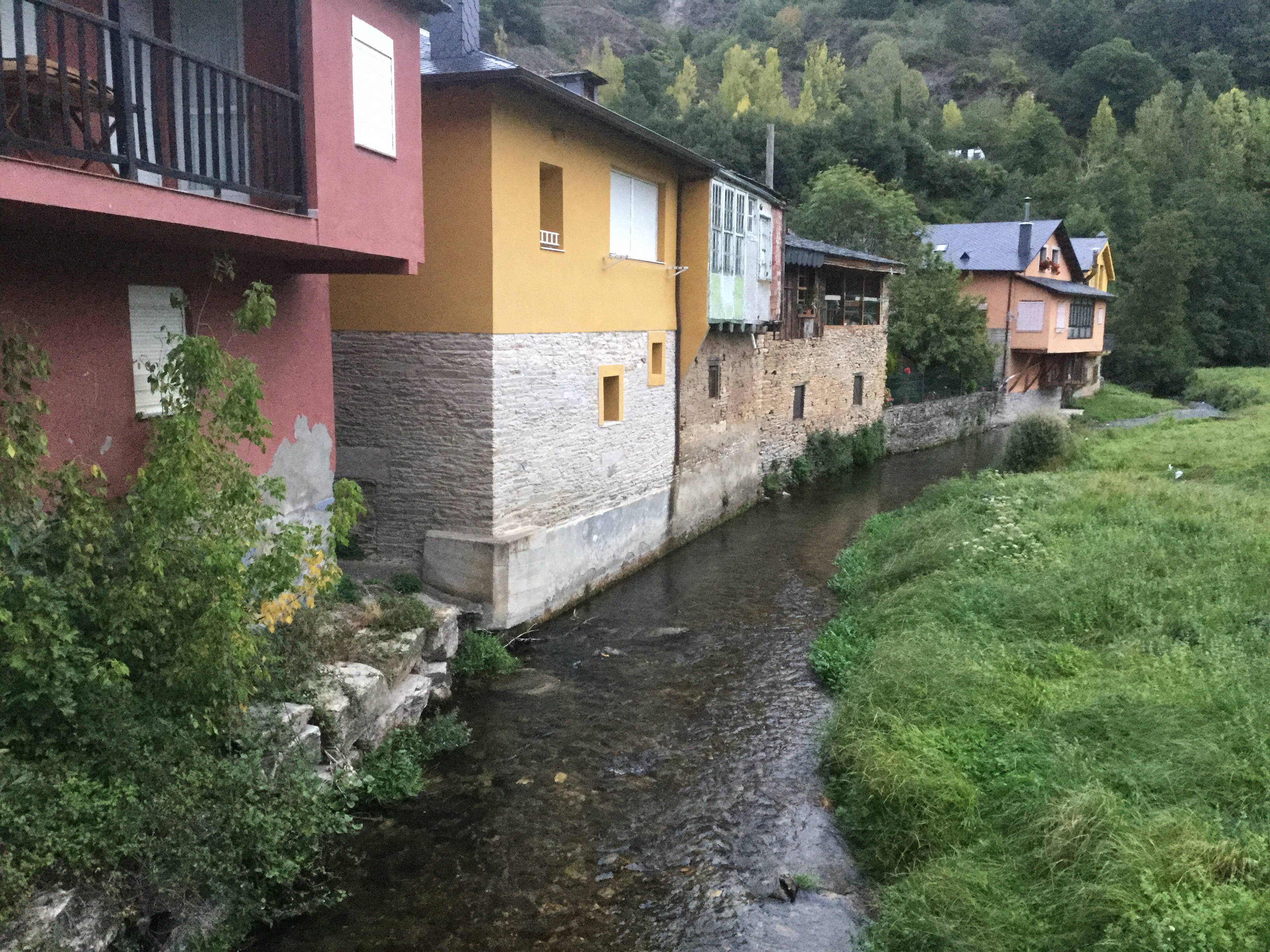
The road wound under huge motor ways that passed over valleys and entire towns. At Ruitelan a double motorway.
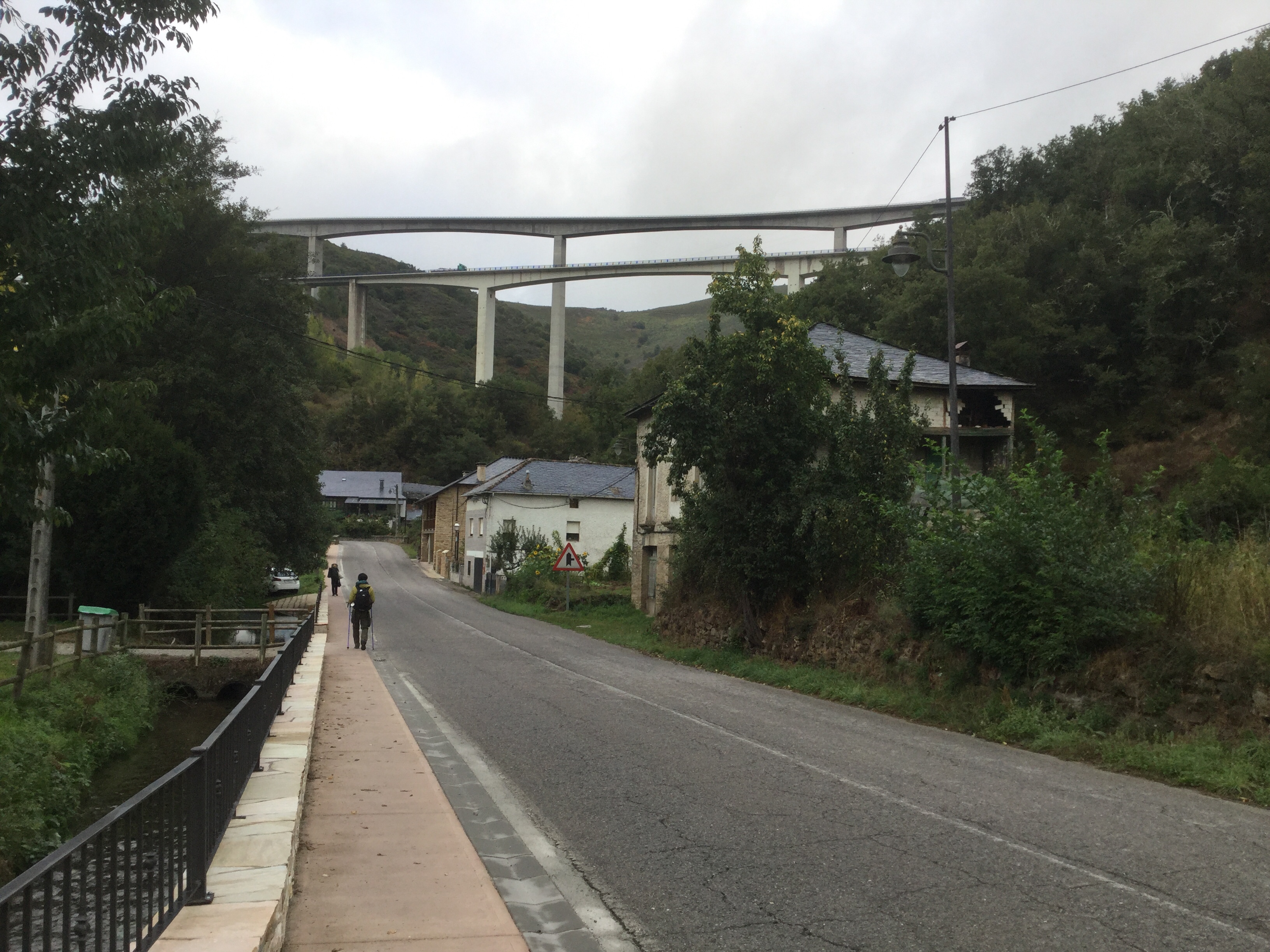
Near Las Herrerias we nearly missed the turnoff from the road. Two pilgrims disappeared around a bend in the road as we approached. There was a small yellow arrow on a post . It wasn’t the sign we had become accustomed to. We pause and did up our shoe laces. A pilgrim walked past and we asked him. He checked his GPS. Oh glad you told me he replied. This turnoff is the right way. A woman also uncertain approached. There had been a Camino sign and we had missed it. We all decided to go with the guy and his GPS. We made the right decision. From Las Herrerias if booked in advance a horse can be ridden over the steep rocky incline to O’Cebreiro.
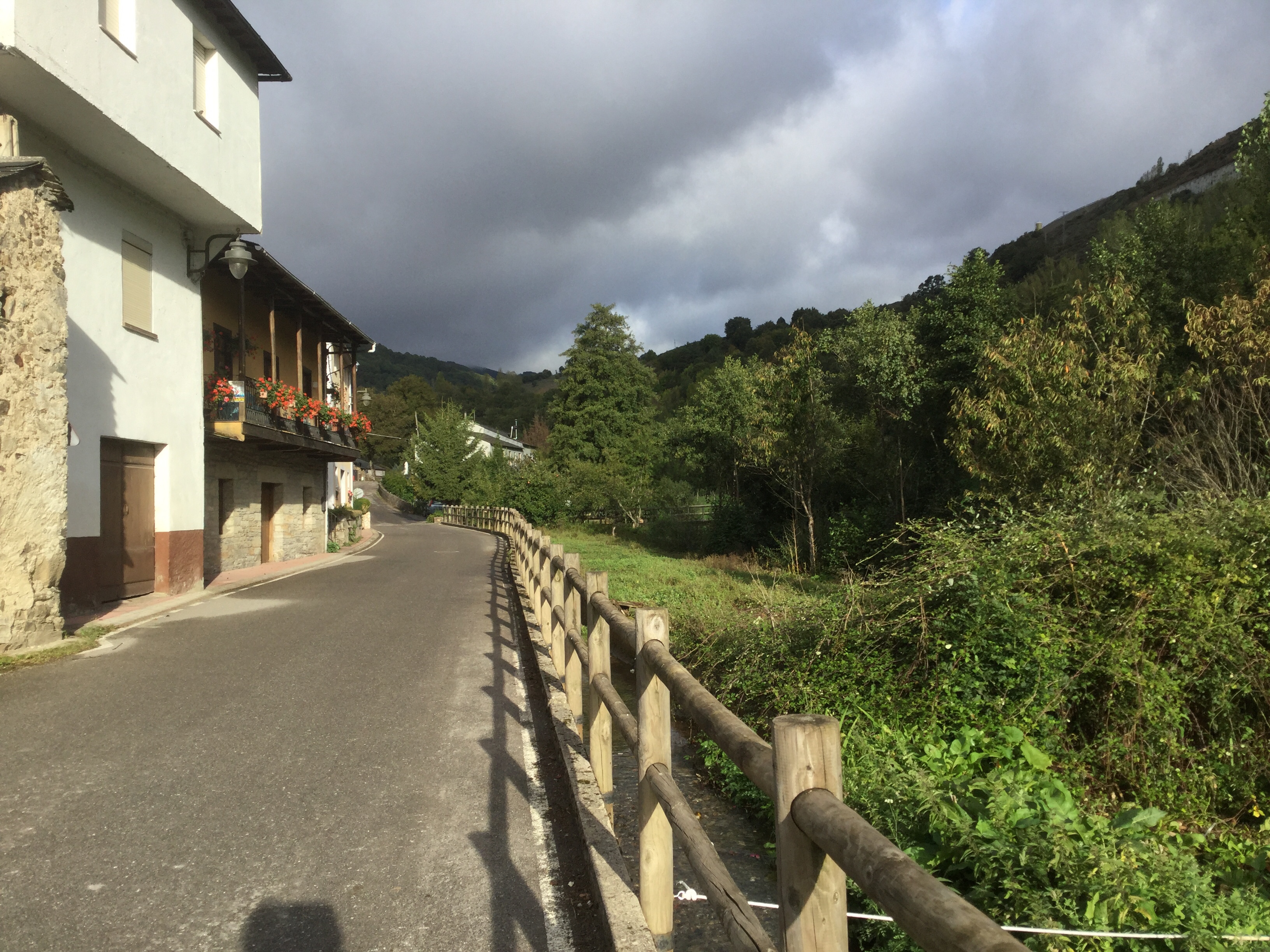
Half an hour after leaving the peaceful village of Las Herrerias we turned to the left off the road down a steep path. This was the beginning of a gruelling two hour climb over and around rocks, stones, mud and horse poo to O’Cebreiro. Just before reaching the town we leave the region of Castilla and León and enter Galicia.

As Horseless Dave climbed steadily and slowly upwards he began thinking that a wise man would have begged, borrowed or stolen a horse for this part of the journey. As we entered O’Cebreiro Horseless Dave finally found not one but several horses but now having reached his destination it was too late for them to be of any use to him.
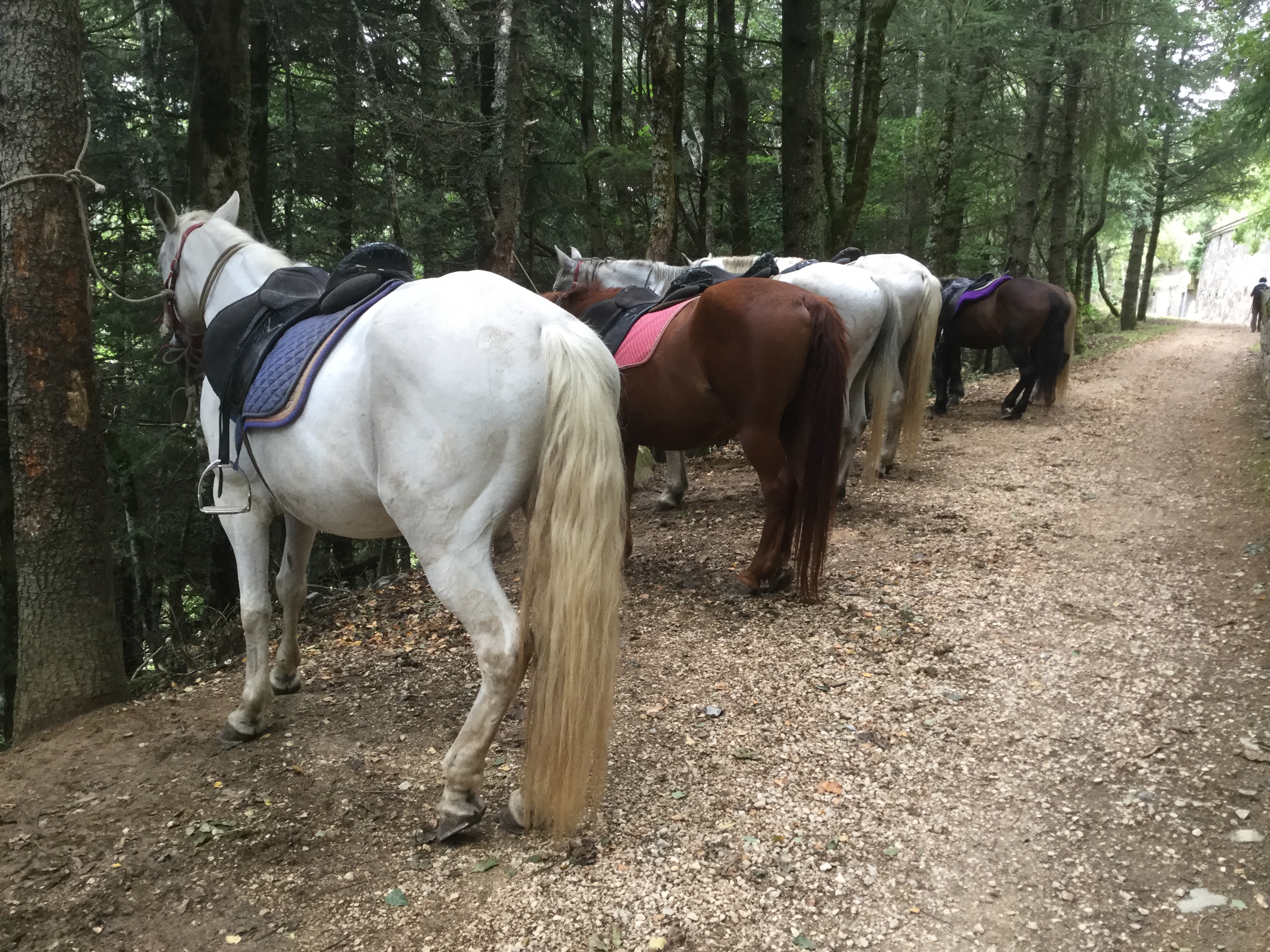
Just past the village wall of O’Cebreiro we come to one of the earliest surviving buildings on the Camino, the old church of Santa Maria Real which dates from the 9th century. Next to the church is a bust and many plaques of commendation and respect for Elias Valiña Sampedro. He was a parish priest and it was his idea to mark the Camino Francis with the yellow arrow that now along with the scallop shell as become a symbol of the Camino.

There was an icy wind and still quite early so we continued on down the mountain. The views were spectacular and at Alto San Rogue a larger than life statue of a medieval pilgrim bracing against the wind.
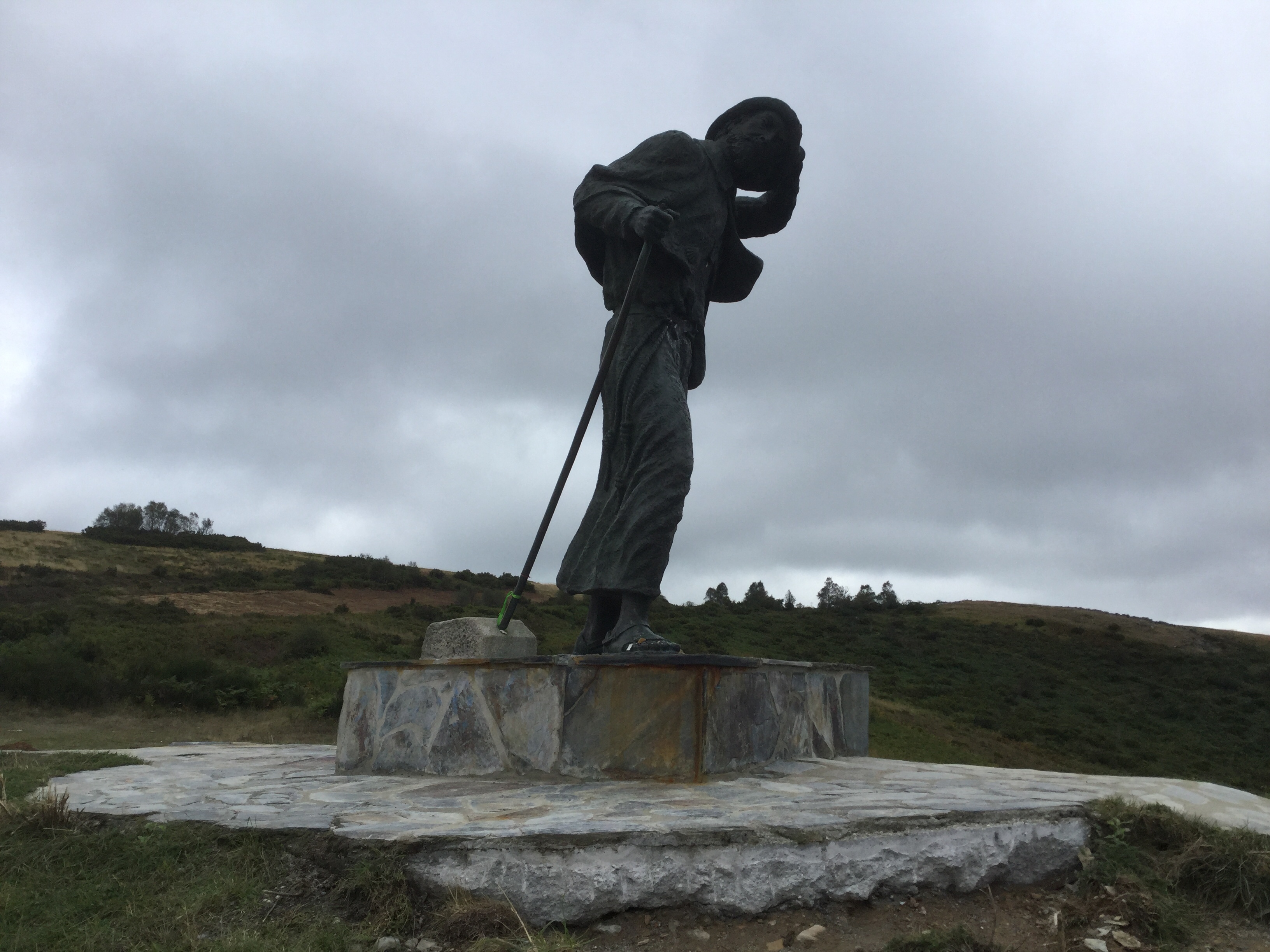
At Hospital de la Condesa we stopped for the night and that evening went to the only bar in town for a great pilgrims menu. During dinner a procession of cows walk past the door and down the road for milking.
